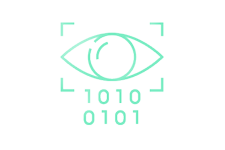Understanding Security Posture
Why Proactive Security Posture Is Important
The cyber threat landscape is evolving at an unprecedented rate. Cybercriminals can find and exploit vulnerabilities faster than ever before, leaving cybersecurity professionals precious little time to respond. Adopting a proactive cybersecurity posture is the only way to combat this phenomenon. Organizations must continuously assess and improve security measures to identify and mitigate vulnerabilities before attackers get a chance to exploit them.
Security Posture vs. Security Compliance
While similar, security posture and security compliance are two distinct terms. Security posture assesses an organization’s actual security capabilities and readiness, while security compliance assesses how effectively an organization meets specific regulatory requirements and standards.
It’s important to understand that compliance doesn’t necessarily equate to a strong cybersecurity posture; an organization can be compliant yet still have significant security vulnerabilities. Therefore, focusing solely on compliance without addressing overall security posture can leave an organization exposed to threats.
Key Components of Security Posture
Risk Management
Incident Response
Compliance and Governance
Security Architecture
Employee Training and Awareness
Attack Surface Management
Security Policies and Procedures
Assessing Security Posture
Assessing your security posture is an essential process that involves:
Inventorying Assets
Identify and understand all the assets — including software, hardware data, and more — you need to protect.
Identify and understand all the assets — including software, hardware data, and more — you need to protect.
Identifying Vulnerabilities
Scan through the inventory to find weaknesses.
Scan through the inventory to find weaknesses.
Analyzing Threats
Identify potential threats to assets.
Identify potential threats to assets.
Assessing Risk
Determine the potential impact of identified threats on identified vulnerabilities and the wider business.
Determine the potential impact of identified threats on identified vulnerabilities and the wider business.
Identifying Improvements
Compile findings into an actionable report.
Compile findings into an actionable report.
Fortra's Approach to Strengthening Security Posture
Fortra offers a range of security posture management tools to help organizations improve their security posture, including:
Vulnerability Management

Fortra Vulnerability Management (VM) is a proactive, risk-based solution that identifies, assesses, and prioritizes security vulnerabilities to improve an organization’s security posture. Fortra VM offers a comprehensive and scalable approach to vulnerability management.
Managed Detection and Response

Fortra Managed Detection and Response (MDR) tool offers continuous threat detection and response across an organization’s environments. It addresses critical incidents promptly and offers a 15-minute triage service-level agreement for high-priority threats.
Security Configuration Management

Fortra Secure Configuration Management ensures that system configurations align with internal security policies and external regulatory standards. It assesses configurations against a comprehensive library of over 4,000 policy and platform combinations, including standards like PCI DSS, SOX, and HIPAA. When deviations are detected, the solution alerts security teams.
Human Risk Management

Fortra Human Risk Management delivers comprehensive training that transforms user behavior and fortifies organizations against threats. It offers engaging, interactive content, real-world phishing simulations, comprehensive analytics and reporting, flexible course assembly, and multilingual support.
Cloud Data Protection
Fortra’s Cloud Data Protection solutions offer integrated capabilities to secure cloud environments, enforce access policies, and protect sensitive data. Fortra Cloud Access Security Broker (CASB) provides visibility into cloud application usage and helps enforce data protection policies across sanctioned and unsanctioned services. Fortra Zero Trust Network Access (ZTNA) ensures secure, least-privilege access to cloud resources based on user identity and context. Fortra Secure Web Gateway (SWG) protects users from internet-based threats by inspecting and filtering web traffic in real time. Fortra Data Security Posture Management (DSPM) continuously discovers, classifies, and monitors sensitive data across cloud environments to reduce risk and support compliance. Together, these solutions reduce exposure across multi-cloud and hybrid environments while strengthening overall security posture.
Next Steps
Building your security posture isn’t a set-it-and-forget-it task. It’s a journey that will continue to grow and evolve over time. Fortra can help you develop a more mature cybersecurity posture, so you’ll be able to support business objectives with confidence and reliability.